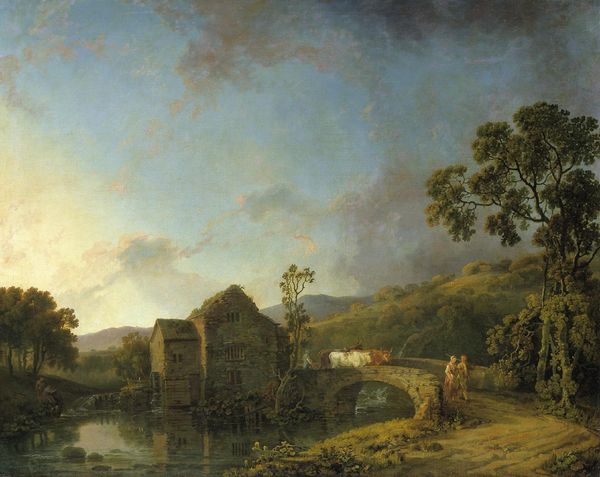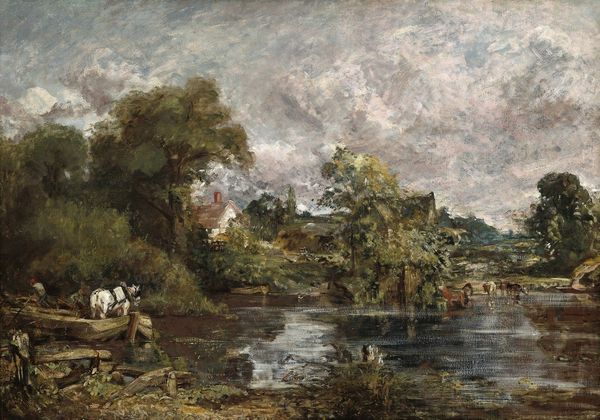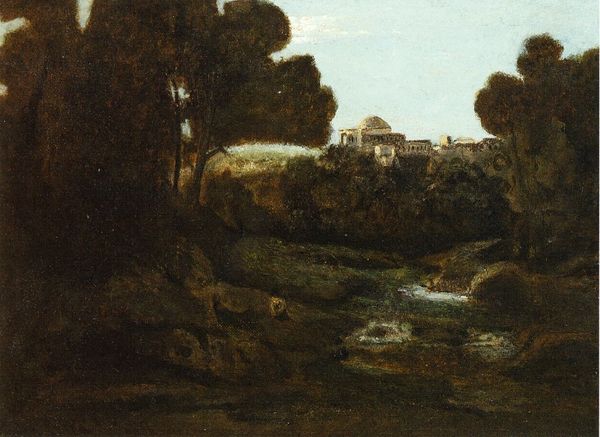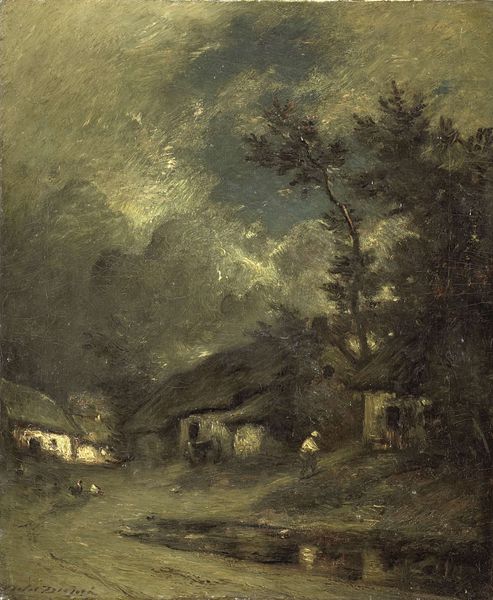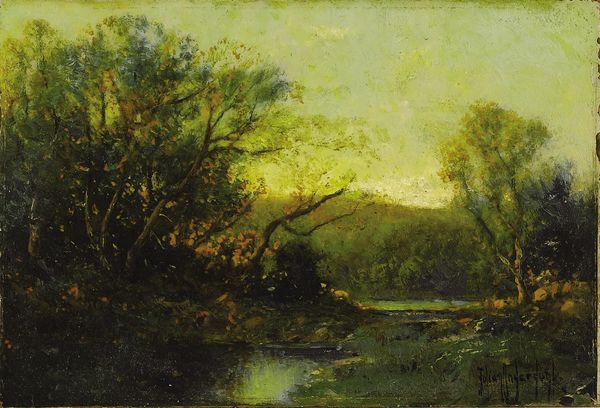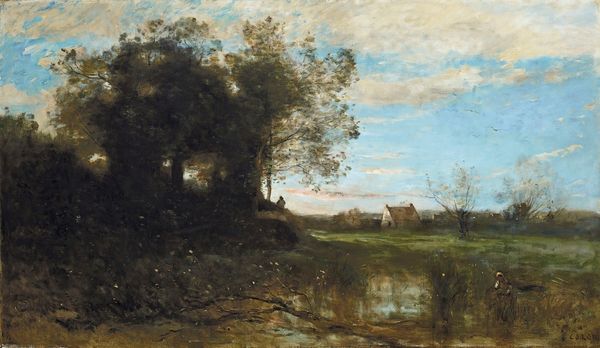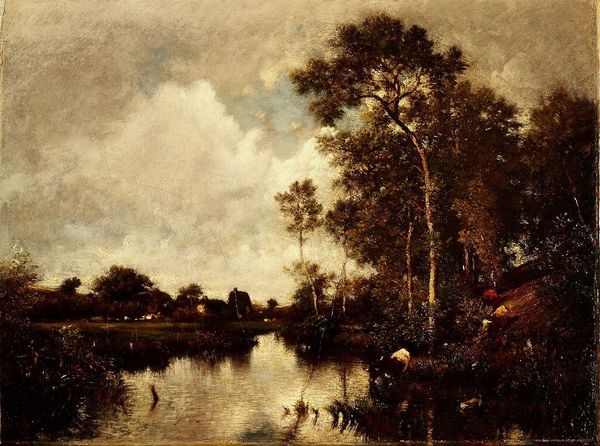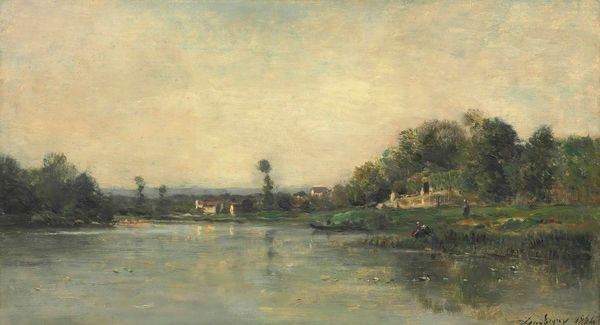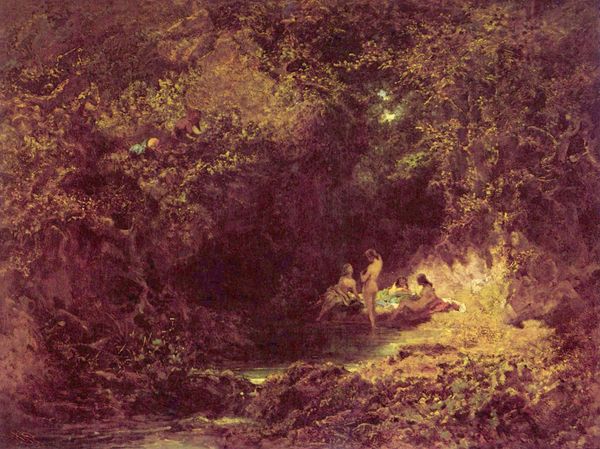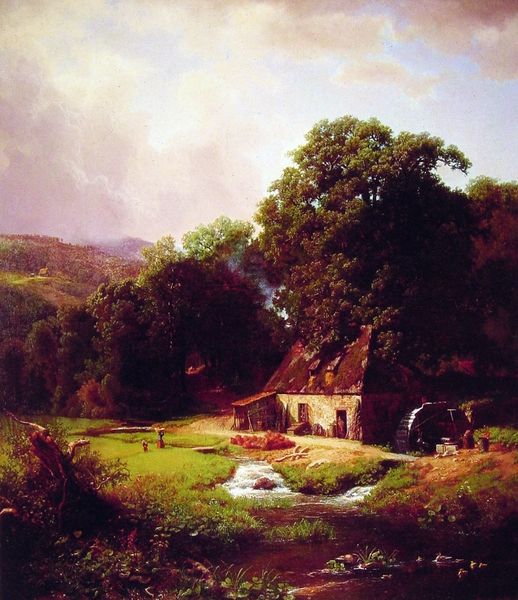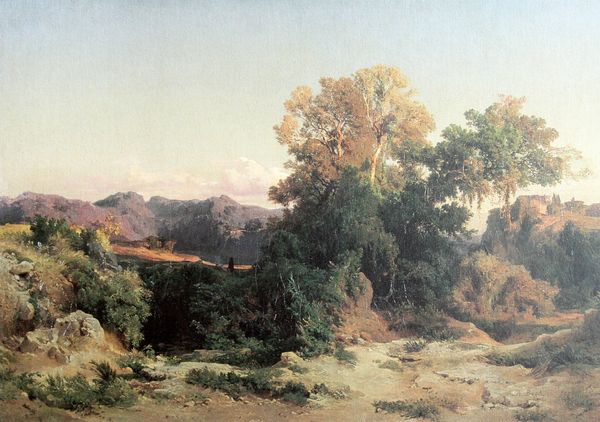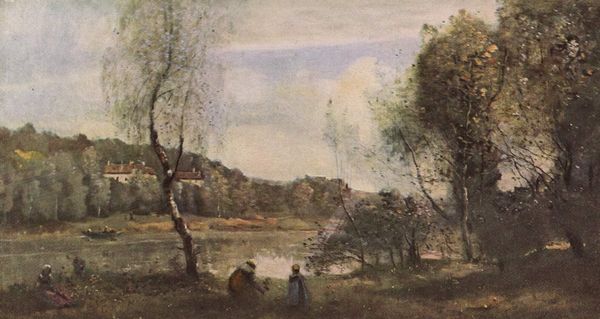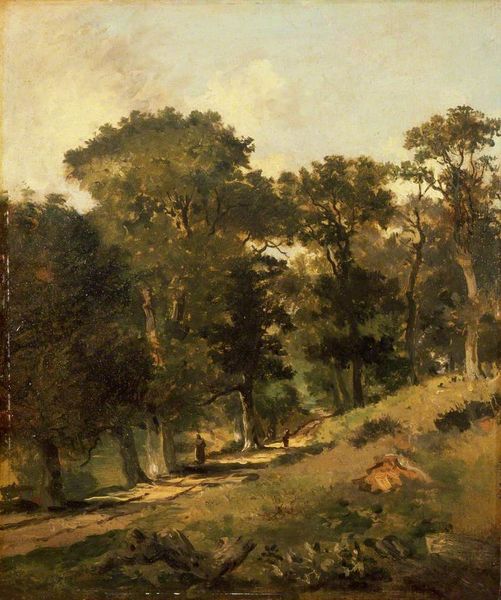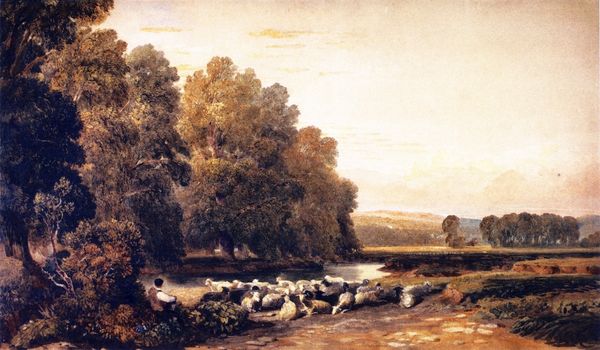
Dimensions: 15 x 23 cm
Copyright: Public domain
Editor: Here we have Carl Spitzweg’s “Thunderstorm,” painted in 1870 using oil paints. There's such a somber mood. What strikes me is the raw application of paint; it's not about pristine depiction, but a capturing of fleeting atmosphere. What do you make of it? Curator: Notice the house: it is very close to the raw materials, the land itself. The dwelling merges with its surroundings. I am drawn to the construction, not merely as a picturesque detail, but as an embodiment of labor and human interaction with nature. Editor: It's almost like the house is made of the earth itself, fading into the landscape... So, are you saying it speaks to a specific relationship with the environment, in terms of its creation? Curator: Precisely. Spitzweg isn't just presenting a storm; he's showing the reciprocal dependency of the inhabitants on the environment. The "romanticism" is rooted not in some sublime experience of nature, but in material interactions—the labour, resources and economy of such lifestyle, which contrasts significantly with industrial modernity. Consider also what such a building material could be for working class people in that specific time? Editor: That’s a perspective I hadn’t considered. Seeing the brushstrokes less as artistic flair and more as revealing a raw process. Something I should explore is the impact the rise of industrialised paint production would have had on this artist? Curator: Exactly! Keep looking past the finished piece. You must question "How was it made?", and you might see social statements embedded within seemingly simple depictions. Editor: I will keep that in mind; it provides an alternate lens. Thanks for sharing your unique insights! Curator: The pleasure is all mine. Never stop questioning the means.
Comments
No comments
Be the first to comment and join the conversation on the ultimate creative platform.
